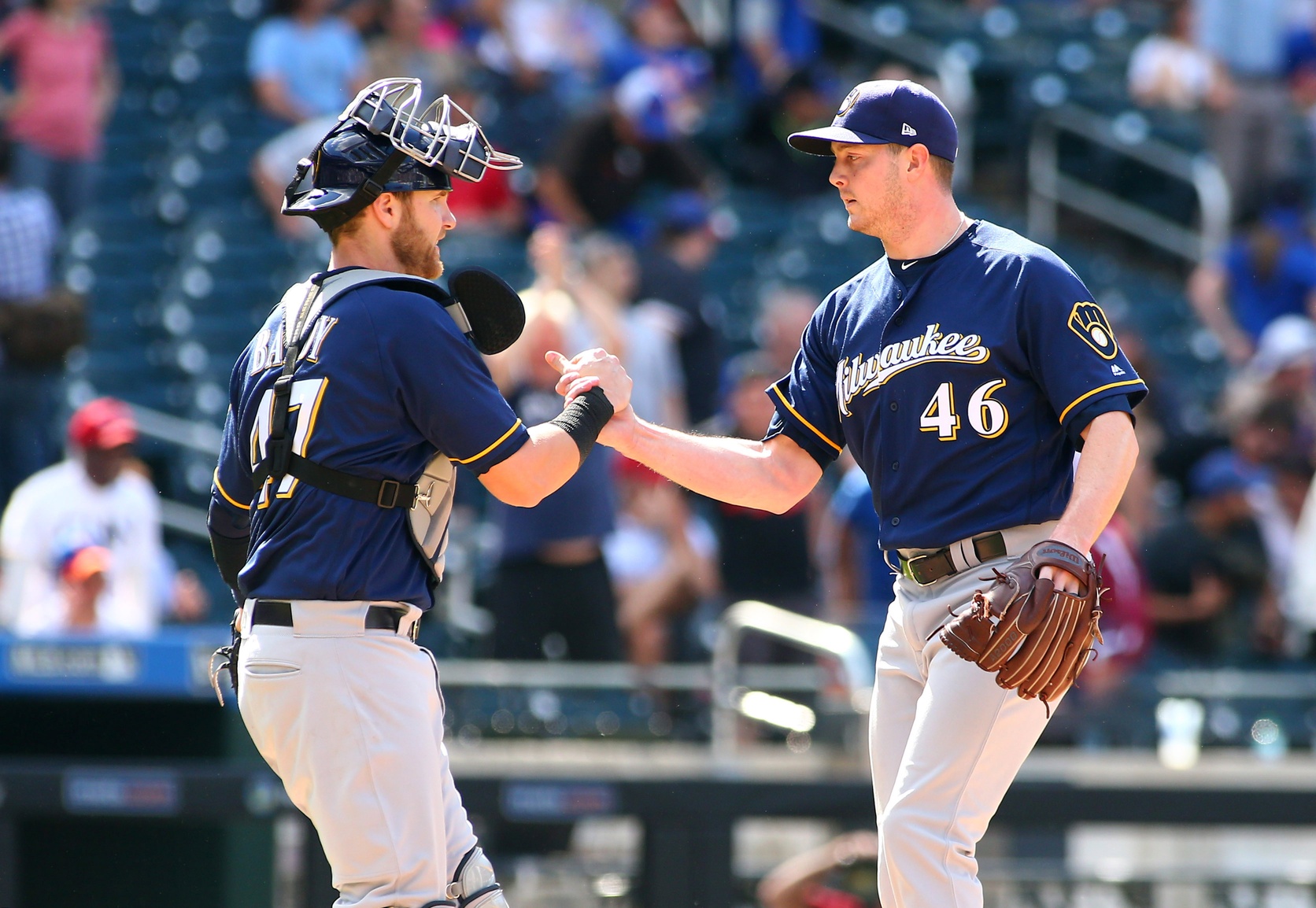Because more than some 2,000 years ago an emperor thought it was a good idea, we have months to divide up our year and, by extension, our baseball season. Seems like as good of a reason as any to check in with the state of the Brewers statistical profile and what, if anything, one can discern as “real” at this point in the season for the first-place club.
As I did last month, I will look at stabilization points based on Russell Carleton’s research from the plate appearances and innings pitched for Brewer hitters and pitchers, respectively. Of course, stats haven’t truly “stabilized” in the way we might usually think of it, but some statistics have begun to trend toward being predictive of rest-of-season performance and true talent level.
With regular position players in the 175-200 plate appearance range and starters with around 50 innings pitched, walk rate for both hitters and pitchers has started to become more predictive, and that might give us some ideas about the rest of the season performance for Milwaukee.
- Eric Thames is (plate discipline) God
Through the end of May, Eric Thames had a 17.1 percent walk rate in his 199 plate appearances. That puts him just behind Mike Trout, and two spots ahead of Joey Votto. Understandably, Brewers fans were all enthralled with Thames’ power output at the beginning of the season, and though injuries possibly took some of the air out of his 74-homer pace, the on-base skills haven’t gone anywhere.
After a 17.5 percent walk rate in April, Thames followed that with a still-outstanding 16.7 percent walk rate throughout the month of May as he struggled with only three home runs and a .221 batting average. Through the first two months of the season, Thames placed fifth in all of baseball with his walk rate.
If you’re a Brewers fan, or maybe just a dork, you might even be more excited by this development than Thames’ Wisconsin state fair-worthy freak show of round-trippers. The walk rate is truly elite and bodes well for his current value to the team and beyond, regardless of what’s happening with his homer totals or batting average.
- Lefty hitters haven’t been abnormally hard on Brewer pitching
Without a consistent southpaw presence in the bullpen, some have questioned whether the Brewers would be more susceptible to left-hand heavy lineups or in high-leverage situations. So far, though, that hasn’t really been the case.
Against left-handed hitters, Brewer relievers have been pretty much league average through May, placing 20th in baseball in walk rate against lefties and ninth in strikeout percentage. Somewhat surprisingly, the pen ranks fifth in xFIP against wrong siders. It doesn’t appear to quite be a small sample size issue leading to more variance for the Brewers, either, as the opposing teams have at least attempted to take advantage of the platoon, um, advantage. The Brewers bullpen has faced the second-most lefty batters, trailing only the also righty-heavy Marlins.
The team’s passable performance against lefties in due in large part to the dominance of Corey Knebel and Jacob Barnes, who have been fantastic compared to the rest of the pen. But for the much-discussed and anticipated moves that David Stearns and the front office may or may not make for a playoff push, a LOOGY isn’t the requirement that perhaps many of us thought it might be.
- The starters have limited walks
Through May, the Brewer starters were solidly in the bottom third in the majors in walk rate. Matt Garza, in particular, has been impressive in limiting walks so far, with a 5 percent walk rate over 40 innings pitched. In keeping with the spirit of this series, it’s prudent to note that he still falls below the 50 innings pitched where walks typically become more predictive. However, for a pitcher whose career walk rate is closer to 8 percent, this is a development worth monitoring as the season moves forward.
The starters ranked 19th in baseball in strikeout rate through May, so there is some room for the pitching staff to grow there, but limiting the free passes have certainly kept the rotation competitive.
So, although it’s still early and there’s plenty of baseball left to be played, the Brewers have shown promise in some of the statistics that back up their performance so far as first-place club. Brewer fans are hoping they can end June the same way as more rates stabilize as predictors of future performance.
